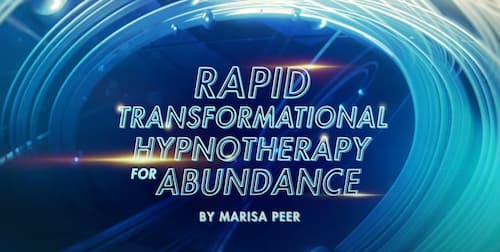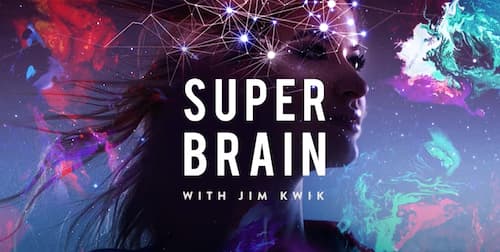The faster you can learn, the faster you can earn.
— Jim Kwik
In our current reality, we are drowning in information. And that information is expanding as we speak. On top of that, that which we learn is becoming outdated faster than ever before in human history.
We wish we were like Neo in the Matrix, being able to download all the knowledge we need straight into our brain by pressing one button. Yet as we wait for this possibility to come forth, what we do have are books. With books, one can download decades of someone’s knowledge and expertise in less than a week.
And in today’s world, reading is not just an optional leisure-pleasure activity. It is one of the most valuable assets that you need to acquire to be successful.
Globally celebrated brain expert, Jim Kwik, calls this asset smart reading. It’s your ability to process information in a way to extract the knowledge, retain and apply it. And if your reading doesn’t catch up with the trend, it creates a growing gap.
So how can you unlock this superpower to read not only faster but smarter to be successful in today’s world?
Here are four secret techniques that will help you become a better and smarter reader. You can try them out and see the results right away.

1. Visual Pacer
The first technique is called a visual pacer. It can be any tool such as a pencil, a marker, your finger, or a mouse that you use to underline the words you’re reading.
Although you must have been told not to use your finger in the schooling system while reading, there are solid reasons why the visual pacer does wonders:
- Children use it because it’s the natural and organic way to read until they are taught not to use it.
- Adults naturally use a finger as well because it naturally makes us focus better.
- Your eyes are attracted to motion naturally because it’s a survival skill.
- That’s the neural setup, meaning that some senses are closely linked, such as your sense of sight and your sense of touch, so when you use your finger when you read, you tend to be more in touch with your reading.
How do you read using a visual pacer?
You are underlying the words with a visual pacer without touching the actual page of the book or the screen on your tablet. It’s important that you don’t skip anything but go through every word like you would normally read it. The only difference is that you’re using your finger or pacer going right above the words.
This technique will make your reading 25-70% faster.
Refine this technique with these tips
- Use the whole arm instead of a finger sliding it across the page.
- Keep an upright posture and breathe deep into your lower belly.
- Tilt your book, not your body.
Ready to take it to the next level?
Pacing with your left hand
As your body moves, your brain grooves.
— Jim Kwik
This advanced technique is based on the body-mind connection – when you use certain parts of your body, it stimulates certain parts of your brain.
You see, reading involves mostly the left side of the brain. It’s logical, linear thinking. But if you want to smart read, you want to involve the right side of the brain, which is all about creativity, imagination, and visualization.
So by using your left hand as a visual pacer, you stimulate the right side of your brain, creating a coherent state that stimulates your senses and emotions and improves your comprehension.

2. Indentation Technique
There is only trained or untrained reader.
— Jim Kwik
This technique will boost your reading speed by 25%. It’s called Indentation.
It’s based on our ability to see objects and movement outside of the central focus while we are looking straight ahead. It’s known as peripheral vision. It essentially allows you to see things without turning your head or moving your eyes.
Jim Kwik explains that children and slow readers tend to see letters of the word; normal readers see word for word. Trained readers, on the other hand, tend to see groups of words together because they utilize their peripheral vision.
Essentially, it means that you see words to the right and to the left, so instead of making stops on every word, you make fewer stops. This is how this technique saves you energy and time.
The technique
- Using your finger, but instead of going all the way to the end, stop at about an inch to the end of the line.
- When you go back to the left, do the same – stop at an inch to the end.
- So you’re moving your finger left to the right, right to the left, but the margins are moved in closer together.

3. The 1-2-3 Technique
Remember when you were a kid, you would get tired of reading loudly and you would be told to read silently to yourself?
That’s when you internalized the voice and developed this habit of reading to yourself. It’s called subvocalization. It’s your inner voice that is reading to you that acts as the underlying speech inside your head. And it’s a bad habit that we all picked up when we were kids.
Why is it a bad habit?
If you have to read each word out loud, you can read as fast as you can speak. In other words, your reading speed is limited to your talking speed. But the truth is that you don’t need to pronounce the word to understand its meaning, and fast readers read by sight.
In fact, 95% of the words we read on a regular basis are sight words – we know their meaning by sight without pronouncing them.
For example, if you are driving around and see a stop sign on the corner, you understand what that means without saying the word STOP. The sight words include filler words such as punctuation and prepositions.
While you can’t totally eliminate subvocalization, you can reduce it with this technique and accelerate your reading by interrupting your inner voice.
The technique
- When you’re reading, instead of saying the words, count inside your mind: 1,2,3,1,2,3.
- So if you’re counting inside, you can’t be talking at the same time.
- You can repeat whatever you want to interrupt the pattern of the inner voice.
Reading speed base rate
Are you ready to try these techniques out?
Remember that you can’t progress without measuring it, so you want to figure out your starting point or speed base rate to track your progress. The reading speed base rate is how many words you read per minute.
Here is how you can find out
- Pick up a hardcopy book.
- Mark your starting point with a marker.
- Read for full comprehension how you would normally read to fully understand what you’re reading for 60 seconds.
- At the end of 60 seconds, stop and put a margin where you stopped with a marker.
- Count the number of lines you’ve read – this is your lines per minute.
- Count the average number of words per line.
- Most books have 10 words per line. So you just multiply that number by 10 – this is your base rate.










